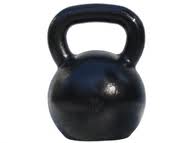Kettlebell training has really gotten to be a big thing over the la st couple of years and, while I haven’t actually tried a class myself, those I know who have tried it absolutely love it. It’s great to see resurgence in a piece of equipment like this, since it provides variety to group exercise.
st couple of years and, while I haven’t actually tried a class myself, those I know who have tried it absolutely love it. It’s great to see resurgence in a piece of equipment like this, since it provides variety to group exercise.
Problem with most kettlebells is that you can’t often do them in a traditional group-exercise studio. A participant accidentally dropping one of those is going to leave quite an impression on a hardwood floor that you find in most group-exercise rooms. In fact, we’ve had clubs that are heavily involved in kettlebell trading completely avoid a hardwood altogether for just that reason.
What they ask us about instead is a rubber floor for group exercise. Well, we don’t really recommend that. Rubber is great for providing resilience need for group exercise – especially the thick rubber floors with an air space below – and it certainly won’t be dented by kettlebells. The problem is the traction; rubber floors’ surfaces are just too aggressive.. A person sliding back and forth on a rubber floor, while wearing rubber-soled shoes, has a great risk of catching their foot on the floor and either pronating or supinating the ankle. By contrast, a wood floor is designed to allow the foot to slide easily across the surface.
So, what’s the solution? Well, there’s no perfect one, but like my earlier treatise on hand weights, purchasing rubber-coated kettlebells can go a long way to allowing wood floors and kettlebells to more peacefully coexist. Like free weights, many manufacturers who make steel kettlebells also manufacture those made with urethane. Kettlebells can still be dropped and may dent a floor, but this goes a long way to prevent the problem.
